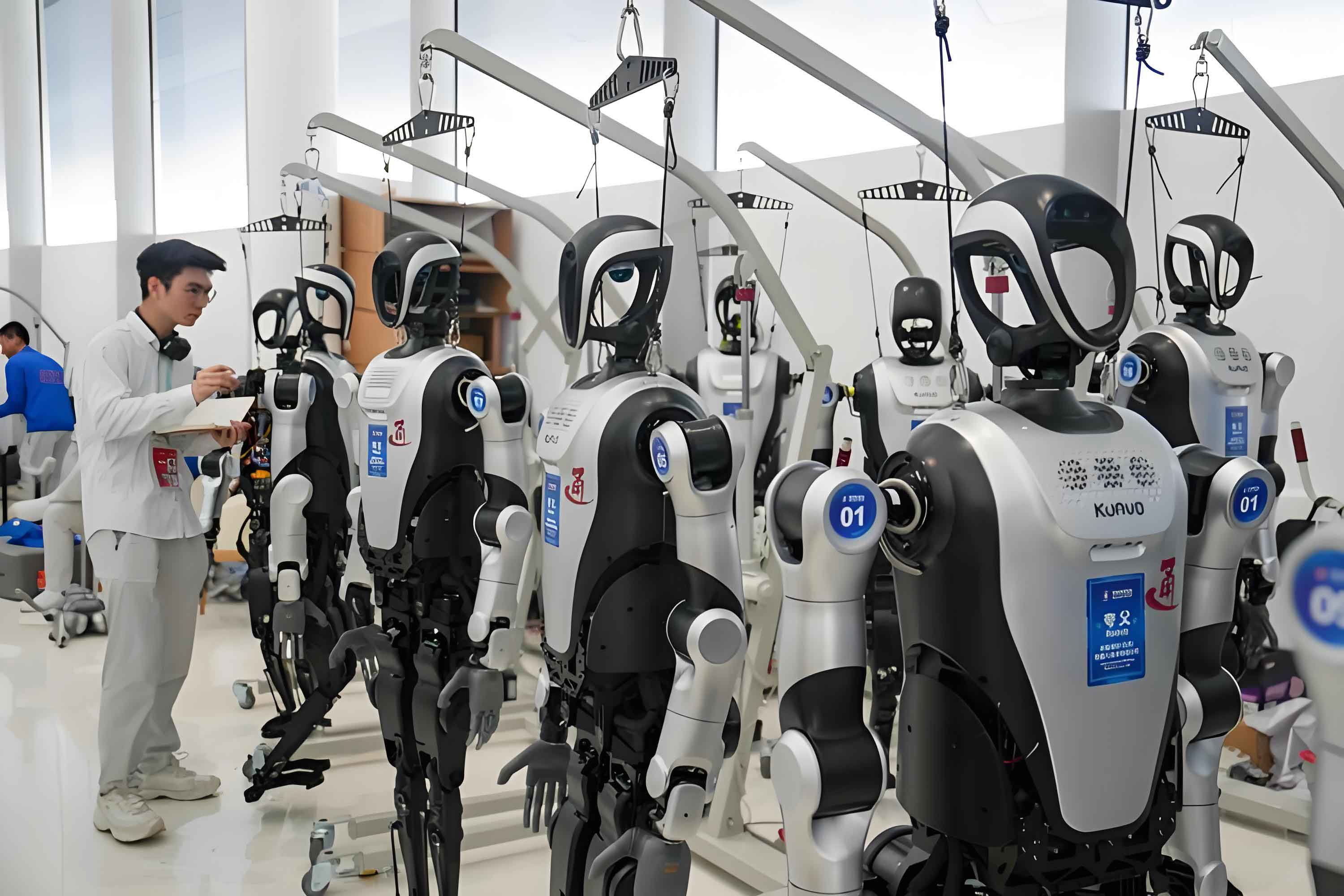Shanghai Zhiyuan New Technology Co., Ltd. has emerged as China’s leading embodied intelligence enterprise just two years after its founding, positioning humanoid robots for industrial and household adoption within five years. The company’s groundbreaking open-source strategy is catalyzing global innovation in the field.
1. Dual Open-Source Framework Revolutionizes Development
Zhiyuan has released its “AgiBot Digital World” simulation framework alongside an extensive simulation dataset covering 180+ objects and 12 core skills across five application scenarios. This follows February’s open-source release of the “AgiBot World” project – a collaboration with Shanghai Artificial Intelligence Laboratory and the National Humanoid Robot Innovation Center – containing over one million real-world humanoid robot data points demonstrating 80+ daily life skills.
“Our open-source initiative aims to empower the entire industry,” stated Yao Maoqing, Executive Dean of Zhiyuan Robot Research Institute. “A thriving ecosystem benefits all players advancing humanoid robot technology.” The dual approach enables developers worldwide to leverage real-world and simulation data for training embodied intelligence models, test iterations efficiently in virtual environments, then deploy optimized models to physical humanoid robots.

2. Accelerated Growth Fueled by Strategic Ecosystem
Founded in February 2023 and headquartered in Zhangjiang Science City, Zhiyuan has rapidly scaled with five humanoid robot models developed and 1,000+ units mass-produced in Shanghai’s Lingang New Area. This trajectory stems from Shanghai’s comprehensive innovation ecosystem providing:
- Strategic R&D partnerships with institutions like Shanghai Artificial Intelligence Institute
- Specialized government funding programs
- Dedicated manufacturing facilities
- Advanced talent recruitment pipelines
Founder Peng Zhihui (known online as “Zhihui Jun”) launched the venture after leaving a major tech firm, leveraging his robotics expertise demonstrated to 2.62 million Bilibili followers. Shanghai AI Institute Chief Scientist Yan Weixin foresaw the convergence: “Integrating large models with humanoid robots creates truly general-purpose machines beyond single-scene applications.” This vision materialized through their collaboration on the first-generation humanoid robot prototype “Expedition A1” in August 2023.
3. Industrial-Scale Training Infrastructure
Within a 2,000-square-meter data factory in Zhangjiang, over 100 “Expedition A2-D” humanoid robots train across five environments:
| Training Environment | Key Tasks |
|---|---|
| Residential Spaces | Household chores across replicated living rooms, bedrooms, kitchens |
| Industrial Settings | Warehouse sorting, product packaging, material transportation |
| Commercial Scenarios | Retail assistance, inventory management |
Data acquisition specialists guide humanoid robots through tasks using dual controllers. “Training a single commercial task requires approximately 10,000 data captures,” explained one technician currently collecting 150 daily data points for a one-minute operation sequence. All data undergoes cloud-based validation with algorithmic verification to ensure motion precision before inclusion in the “AgiBot World” dataset.
4. Virtual-Real Integration Methodology
As the first company to open-source million-scale, multi-scenario humanoid robot datasets, Zhiyuan’s “AgiBot Digital World” simulation platform enables:
- Hyper-realistic environment modeling for accelerated iteration cycles
- Seamless transition from virtual testing to physical deployment
- 70% faster development iterations compared to physical-only testing
The company will host global “AgiBot World” challenges to foster innovation. “Shanghai’s industrial chain advantages are crucial,” noted a company representative. “The Yangtze River Delta’s concentration of component suppliers creates unparalleled manufacturing efficiency for humanoid robot production.”
5. Commercial Deployment Timeline
Peng Zhihui projects concrete adoption milestones:
- Within 2-3 years: Humanoid robots will revolutionize manufacturing through flexible production, assembly lines, and quality inspection systems
- Within 5 years: Domestic humanoid robots will perform household chores, elderly care, and companionship functions
“The humanoid robot represents the ultimate form of embodied intelligence,” emphasized Yao Maoqing. “Our open-source ecosystem will accelerate the physical manifestation of AI into humanoid robot platforms that interact meaningfully with the material world.” Industry analysts note that Shanghai’s combination of advanced R&D infrastructure, manufacturing capabilities, and application scenarios creates ideal conditions for scaling humanoid robot technologies globally.